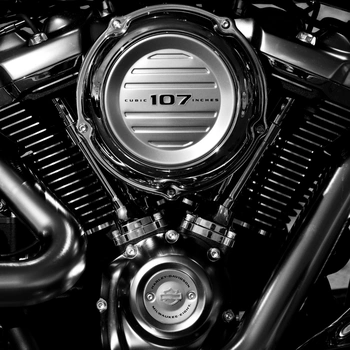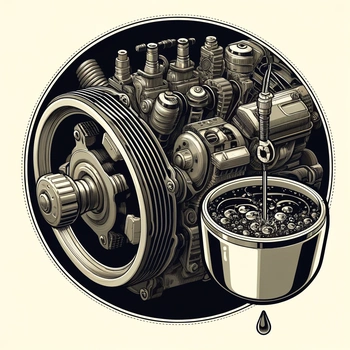
The engine is the powerhouse for the bike, and it is what makes it move. In a motorcycle engine, different motor parts combine to convert the fuel energy into mechanical energy, thus creating friction when they come in contact. As a biker, you know why engine oil is one of the most important fluids for your bike. Not only does it keep your motorcycle engine clean and running smoothly, but it also helps protect your engine from wear and tear. Whatever latest model or superbike you own, if the engine oil maintenance is not correctly and timely performed, it can ruin your riding experience. Now the question is, what happens if engine oil is overfilled in the bike? Too much oil in a motorcycle increases the pressure in the crankcase, forcing oil out of the engine and into the intake system. It can cause potential damage to the motorcycle engine and also burn oil in the engine.
Table Of Contents:
The Mechanics & Risks of Overfilling
Overfilling the engine oil in motorcycles is a common mistake that can lead to significant mechanical issues. Here are some of the primary risks associated with too much oil:
-
Pressure Build-Up
Excessive oil can increase pressure within the engine, leading to seal damage or oil leaks. Specific motorcycles, like those with dry clutch designs (e.g., BMW) or wet clutch engines (e.g., Japanese bikes like Kawasaki and Honda), manifest distinct symptoms. BMWs might experience slipping clutches, whereas wet clutch engines often show oil leaks.
-
Impaired Function
When too much oil froths at the bottom of the crank, it affects the oil pump’s ability to circulate oil effectively, potentially leading to poor lubrication of critical engine components like the cylinder wall and piston.
-
Exhaust Issues
Overfilled oil can force oil past the valve stem seals, resulting in white smoke from the exhaust, indicating burning oil.
Symptoms of too much oil in a motorcycle

To ensure smooth running and prolonged durability of your motorcycle engine, a routine engine oil change is very important. As per the amount specified in the owner manual, bikers must periodically change the engine oil as it not only ensures the healthy running of the motorcycle engine but also increases the running life of your motorcycle. Depending on the size of the engine, every bike requires a varying amount of engine oil and the same can be easily seen in your bike’s owner's manual.
Now when you or your mechanic has changed or refilled the engine oil, you often notice some of these below changes in the functioning of your motorbike when the engine oil has been filled over its capacity, i.e., when the engine oil is overfilled.
Oil leakage
Oil leakage happens when the engine oil seeps out of the engine, often through a small crack or hole. This seeping can cause the engine to overheat, as the oil will not be able to circulate correctly. With no proper lubrication of the engine parts, oil leakage can also lead to engine damage.
Smoky exhaust
Smoky exhaust due to too much oil in a motorcycle can cause the engine to run hotter than usual. The oil breaks down and causes deposits on the valves and pistons, which eventually restricts airflow and causes the engine to run less efficiently.
Fouled spark plug
When a spark plug becomes fouled, there is oil, fuel or carbon deposit on the tip of the spark plug. The deposit prevents the spark from jumping across the gap between the electrode and the ground, which causes the engine to misfire.
Product - NGK Spark Plug DPR7EA-9 - Set of 4
Signs of smoke from the exhaust area and the engine bay
Due to overfilling of engine oil, you may see smoke from the exhaust area because the oil is burning. When the oil burns, it creates a lot of smoke from the exhaust section.
Too much noise from the engine
The engine makes noise when the oil cannot circulate properly. It causes the engine to overheat and the engine oil to break down, resulting in the loss of lubrication and increased engine noise.
Best Practices: How to Check Engine Oil Levels
The correct procedure for checking and adjusting the oil level is crucial for maintaining your motorcycle’s engine health. Here are step-by-step instructions inspired by experienced riders:
-
Ensure a Level of Surface
Always park your motorcycle on a flat surface to avoid false readings. Whether using a center stand or having someone help keep the bike balanced, the aim is to keep it as upright as possible.
-
Check Oil Levels
Use the sight glass or dipstick to check the oil level. It’s important to do this when the engine is cold or after it has settled post-running. The oil should be between the min and maximum marks—never above.
-
Adding Oil
If adding oil, do it slowly and check the level frequently to avoid overfilling. For bikes with an oil capacity specification, follow the guidelines, considering whether you are also changing the oil filter (which might require additional oil).
Product - TriboTEX Small Oil Additive Engine Treatment
What happens if engine oil is overfilled in the bike?
In the owner manual, it is clearly stated: “Not to Overfill”. Unfortunately, there is no clear explanation of what will happen when the engine oil is overfilled? What harm will it have on my bike? In this later section of the blog, we will explain to you what happens when you accidentally overfill the engine oil above the stated limit and the risks it carries for your motorcycle.
Overfilling the engine oil can cause serious damage to your engine, but if you have filled the oil a few millimetres above the maximum sign, there is no need to worry. This is because of fact that the engine oil reserve of the motorcycle is designed to hold some extra engine oil which compensates for the fluid expansion that occurs due to hot conditions. Adding any more engine oil over this limit is bad for the engine.
When you add too much oil, the pressure on the crankcase increases. At the output shaft, this pressure might be well enough to rupture the oil seal if your engine’s crankcase would not have been vented via a breathable circuit. During normal operation, when the air inside the crankcase heats and cools, the breathable pumping balance the pressure inside the crankcase.
When you have overfilled the engine oil, the extra oil will go towards the crankshaft, and as the crankshaft keeps rotating at high speed, this oil gets mixed with air and becomes foamy causing a smoky exhaust. This works as a bad lubricant for the engine and due to this, the oil is not pumped efficiently. Over time due to the weak oil pumping, the engine can even get locked up.
Adjusting Techniques: How to Safely Remove Excess Oil
If you find that you've overfilled the oil, there are several safe methods to remove the excess without extensive mechanical intervention:
- Using a Pump:
As mentioned, tools like a soap dispenser pump can be effective. Insert the tube into the oil filler hole and pump out the excess oil carefully.
Product - Liqui Moly Motorbike Oil Additive | 125 ml
- Drain Bolt Method:
Alternatively, you can slightly loosen the drain bolt and let out a small amount of oil until the correct level is achieved. This method requires careful handling to ensure only the excess oil is removed.
Practical Insights: Ensuring Optimal Oil Health
Motorcycle enthusiasts often share their tips and experiences on forums and social media, contributing to a rich reservoir of practical knowledge. For example, using a hand soap pump or a Windex bottle head for extracting excess oil can be a handy solution to avoid the mess and hassle of removing the drain plug. These methods are not only innovative but also reflect the community’s resourcefulness in handling common maintenance challenges.
Regular checks and maintenance are essential to ensure that the oil remains within the recommended level and is in good condition. Change the oil as per the manufacturer's recommendations, using high-quality oil suitable for your motorcycle’s engine. Regular monitoring helps in early detection of potential issues and extends the engine's lifespan.
FAQs
What happens if I put too much oil in my motorcycle?
Putting too much oil in your motorcycle can lead to several mechanical and operational issues. The excessive oil increases pressure within the engine, which can force oil out of the engine and into other components, such as the intake system. This increased pressure can lead to seal damage or oil leaks. Moreover, the excessive oil can froth at the bottom of the crank, hindering the oil pump's ability to effectively circulate oil. This can cause poor lubrication of critical engine components, leading to increased wear and potential engine damage.
What are the symptoms of overfilled engine oil?
- Oil Leakage: Oil may seep out through small cracks or holes, particularly when there's excessive pressure in the engine.
- Smoky Exhaust: Overfilled oil can lead to burning oil, which typically manifests as white smoke coming from the exhaust.
- Fouled Spark Plugs: Oil can end up on the spark plugs, leading to deposits that prevent proper sparking and cause the engine to misfire.
- Increased Engine Noise: When oil can't circulate properly, it can cause the engine to overheat and make excessive noise due to the breakdown of oil and loss of lubrication.
- Visual Signs of Excess Oil: You might notice higher oil levels in the sight glass or dipstick than recommended.
How do you fix overfilled oil?
To fix overfilled oil in your motorcycle, you can use one of these methods:
- Using a Pump: Employ a pump, such as one from a hand soap dispenser, to carefully extract the excess oil through the oil filler hole.
- Drain Bolt Method: Loosen the drain bolt slightly to let out a small amount of oil until the correct level is achieved. Ensure this process is controlled to avoid removing too much oil.
Can the engine be damaged with too much oil?
Yes, an engine can be damaged by having too much oil. The issues arising from overfilled oil—such as increased internal pressure, impaired lubrication, and potential leaks—can lead to long-term damage. Severe cases might see damage to engine seals, excessive wear on engine components due to inadequate lubrication, and even engine lockup if the situation is not corrected promptly. Thus, maintaining the correct oil level is crucial for the health and efficiency of your motorcycle's engine.






